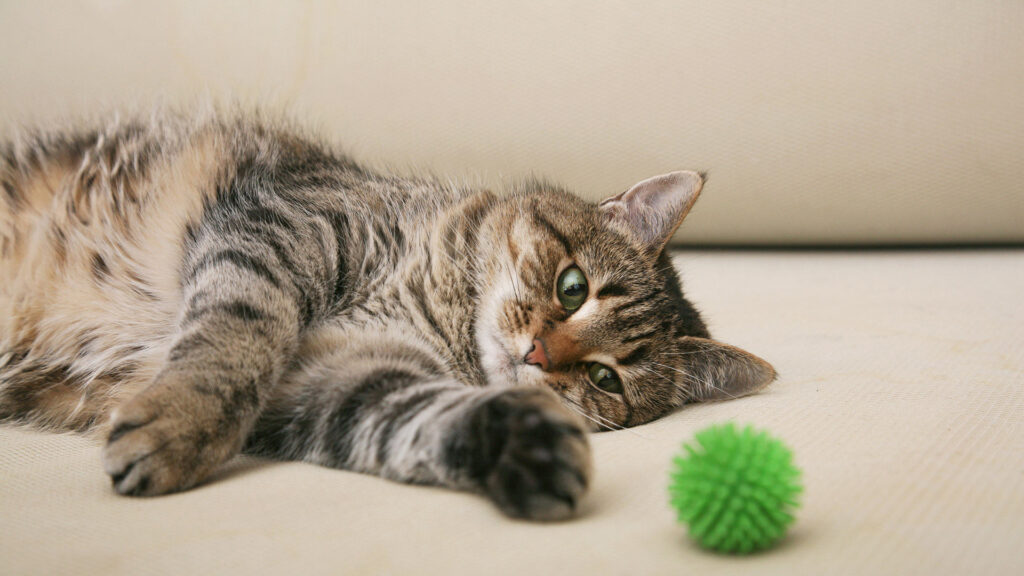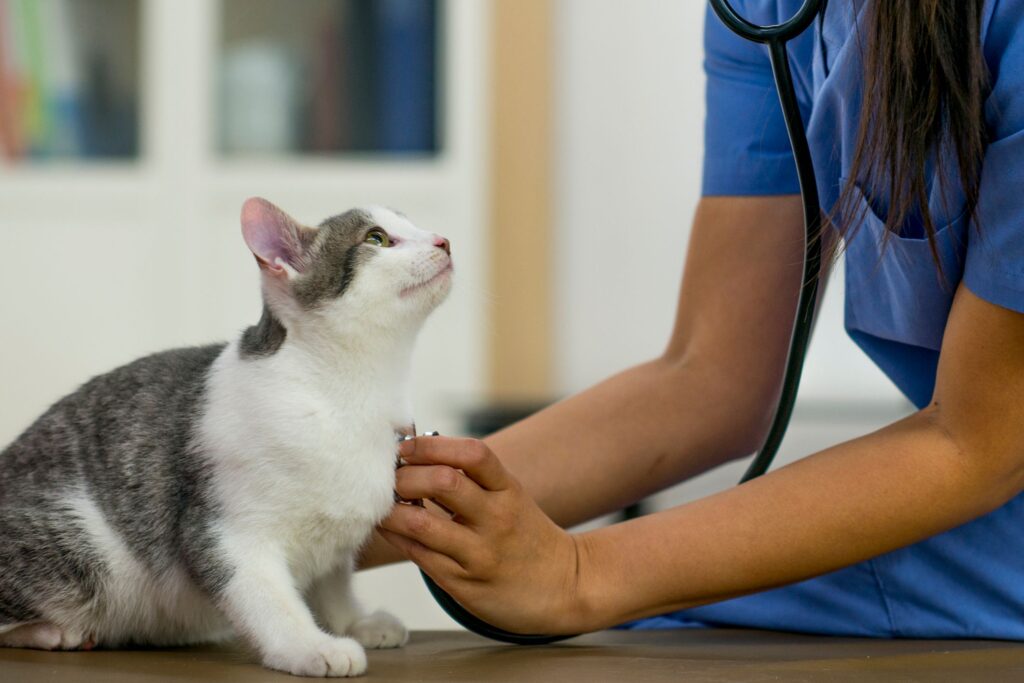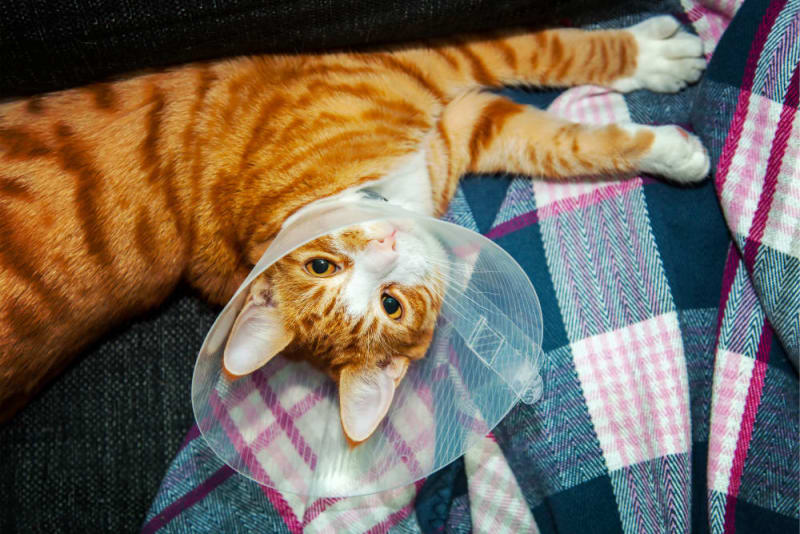After neutering, some cats exhibit increased activity due to hormonal changes as testosterone levels decrease post-surgery. This surge in energy might indicate the cat’s healing process or a relief from prior discomfort caused by mating instincts or interactions with unneutered cats. Restricted movement during the initial recovery phase might also contribute to the perception of heightened activity once the cat starts feeling better. It’s essential to monitor their activity levels to ensure they don’t overexert themselves during the healing period.
Following post-surgery care instructions from the vet is crucial, and any prolonged or concerning behavior should prompt a consultation with a veterinarian for further evaluation and guidance.
What Causes Increased Activity After Neutering in Cats?

It’s important to note that not all cats will exhibit increased activity after being neutered. Individual personalities, age, overall health, and previous behavior patterns all play a role in determining how a cat may react to the procedure. If you notice any sudden or concerning changes in your cat’s behavior after neutering, it’s a good idea to consult a veterinarian for guidance and advice.
Hormonal Changes
Decrease in Testosterone Levels
Neutering involves the removal of the testes, which significantly decreases the production of testosterone in male cats. Testosterone plays a crucial role in driving mating behaviors and territorial instincts.
As the levels of this hormone drop after neutering, it leads to a reduction in aggressive tendencies and a decrease in the drive for territorial marking behaviors, contributing to behavioral changes in the cat.
Impact on Behavior
Testosterone influences various behaviors in male cats, including aggression, roaming, and mating behaviors. After neutering, these behaviors often diminish or become less intense. Cats might exhibit a calmer demeanor and reduced tendencies to roam or engage in fights with other cats due to the hormonal changes brought about by the surgery.
Relief from Discomfort
Alleviation of Mating Instincts
Male cats often experience significant stress and agitation due to their natural mating instincts. Unneutered cats might constantly seek mates, exhibit spraying or marking behaviors, and become more restless or aggressive.
Neutering helps alleviate these mating-related stressors, resulting in a reduction of these behaviors and a subsequent decrease in stress levels.
Reduction in Stress from Unneutered Cats
Unneutered male cats can perceive the presence of other unneutered males as a threat or competition, leading to stress and tension. Post-neutering, this stress diminishes as the cat no longer feels the need to establish dominance or compete for mates.
Consequently, reduced stress levels can contribute to increased overall well-being and a more active, playful demeanor.
Recovery and Healing
Initial Restricted Movement
After neutering, veterinarians often recommend limiting a cat’s activity to aid in the healing process. Cats might initially have restricted movement to prevent any complications or strain on the surgical site. As they start feeling better, the cat might appear more energetic compared to the restricted period, showcasing signs of healing.
Surge in Energy Signifying Healing
An increase in activity after the initial recovery phase can indicate that the cat is healing and feeling better. This burst of energy is a positive sign of recovery, but it’s essential to ensure that the cat doesn’t overexert itself during this period. It’s crucial to balance allowing activity with providing adequate rest to aid in the healing process post-neutering.
How to Manage Post-Neutering Activity in Cats?

By diligently monitoring the cat’s recovery, following the vet’s instructions, ensuring a proper balance of rest and activity, and being vigilant for any concerning signs, you can contribute significantly to your cat’s successful recovery after neutering.
Monitoring Post-Surgery
After the neutering procedure, it’s crucial to closely observe the cat for any signs of complications or unusual behavior. This includes monitoring the incision site for swelling, redness, discharge, or signs of infection.
Additionally, observing the cat’s behavior, appetite, and overall demeanor helps track their recovery progress. Any abnormal symptoms or concerns should be reported promptly to the veterinarian.
Following Veterinarian’s Post-Op Instructions
Veterinarians provide specific post-operative instructions to ensure the cat’s proper recovery. These instructions often include guidance on medication administration, wound care, dietary recommendations, and restrictions on physical activity. Adhering strictly to these instructions is crucial for the cat’s well-being and a smooth recovery process.
Ensuring Appropriate Rest and Activity Levels
Balancing rest and activity levels is essential post-neutering. While some increased activity can be expected, it’s important to prevent the cat from excessive physical exertion during the initial recovery phase.
Encourage rest by providing a comfortable, quiet space for the cat to relax. Engage them in low-impact activities to prevent boredom without allowing overly strenuous play or jumping that could strain the surgical site.
Signs of Concern or Prolonged Behavior
Understanding signs of concern or prolonged unusual behavior is crucial. Watch out for any signs of pain, such as excessive licking or biting at the incision site, lethargy, loss of appetite, vomiting, or diarrhea.
Prolonged or significant changes in behavior, such as continued hyperactivity, could indicate discomfort or complications. Any of these signs should prompt immediate contact with the veterinarian for further evaluation and guidance.
FAQ’s
How do you calm a cat after neutering?
Providing a quiet and comfortable space, gentle handling, and avoiding loud noises can help calm a cat after neutering. Additionally, following the veterinarian’s post-operative care instructions is crucial.
How long should I limit my cat’s activity after spay?
It’s generally recommended to limit a cat’s physical activity for about 7-10 days after spaying to allow for proper healing. However, follow your veterinarian’s specific guidelines based on your cat’s condition.
Does neutering calm a cat down?
Neutering can often lead to a decrease in certain mating-related behaviors and aggression due to reduced testosterone levels, which can contribute to a calmer demeanor in many cats.
Do cats become less active after spaying?
While some cats may show reduced activity due to the recovery process after spaying, it’s not uncommon for them to gradually return to their normal activity levels once they’ve healed.
Why won’t my cat lay down after surgery?
Discomfort, pain, or the feeling of being unsteady due to anesthesia might prevent a cat from lying down comfortably after surgery. However, if this behavior persists, consulting the veterinarian is advisable.
What are the side effects of neutering a male cat?
Some common side effects post-neutering may include temporary lethargy, changes in appetite, mild swelling or bruising around the surgical site, and potential changes in behavior due to hormonal adjustments.
Final Words
In conclusion, after neutering, cats might show increased energy due to changes in their bodies. This can happen because their hormones change, making them less interested in mating or fighting. It’s important to watch over them carefully after surgery and follow what the vet says.
We should help them rest but also give them some gentle activities. If we notice anything unusual or worrying, it’s best to talk to the vet. Taking good care of our cats after neutering helps them heal well and stay healthy.

